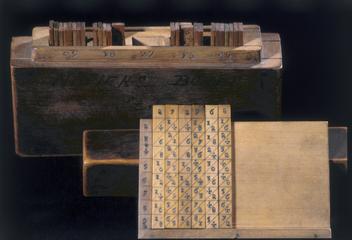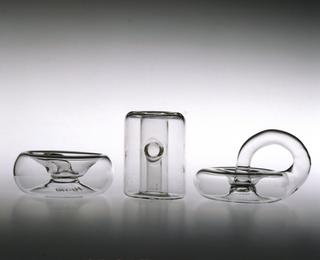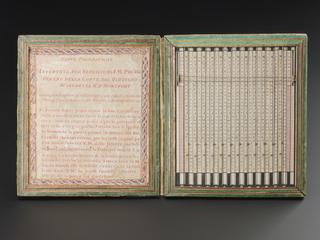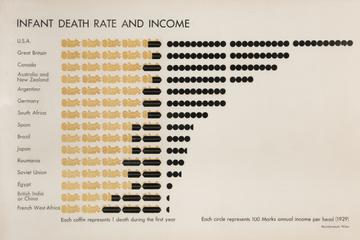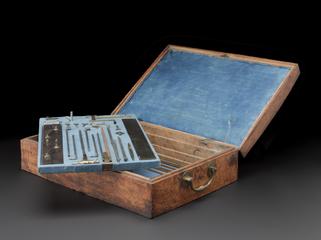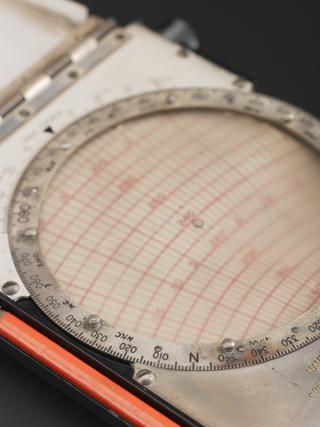









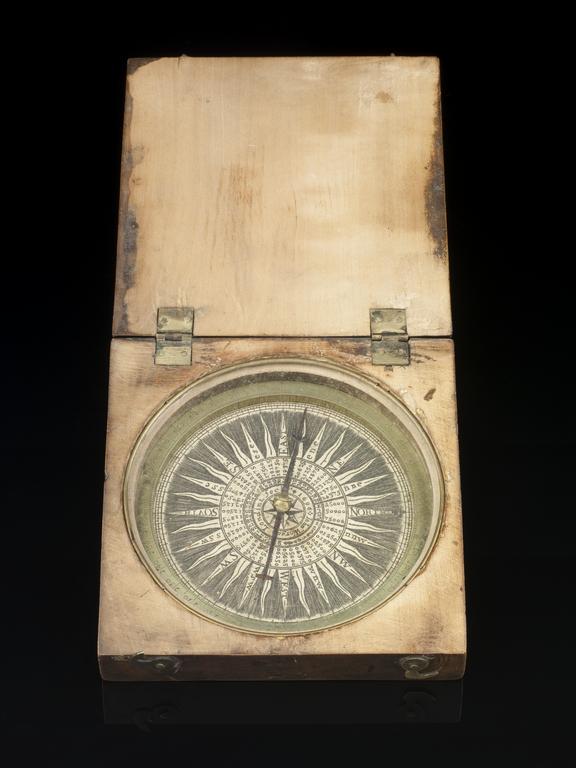
Mathematical compass by John Worgan, 1696
Mathematics are essential in surveying and so surveying instruments are also mathematical ones. John Worgan, a well-respected instrument maker of London’s Fleet Street from 1686 to 1714 was the maker of this rare example of a 17th century magnetic compass (a very similar one is attached to a plane table in the Earl of Orrery collection at Oxford). Part of a group of skilled instrument makers, Worgan apprenticed to the famous mathematical instrument maker, Walter Hayes (recorded working in London from 1648 to 1687) who was succeeded by another of his apprentices, Edmund Culpeper, maker of the famous Culpeper type of microscope.
Looking closer at the centre of the compass, it is signed ‘Iohn Worgan Londini fecit 1696’ surrounded by two rings with printed numbers that form a conversion table and correspond to standard land measurements of the time, an easy calculating aid for the surveyor in the field. In the 17th century land was measured in acres which was divided into roods and perches with one acre being the area that could be ploughed by a team of eight oxen in one day. Therefore, this table running from 1 (00625) to 39 (24375) and then from 1 (25000) to 3 (75000) demonstrates that 1 square perch=1/160 acres =0.00625 acres; 39 perches=0.24375 acres etc.
Details
- Category:
- Mathematics
- Object Number:
- 1994-1285
- Materials:
- brass (copper, zinc alloy) and glass
- type:
- magnetic compass
- credit:
- Tesseract
